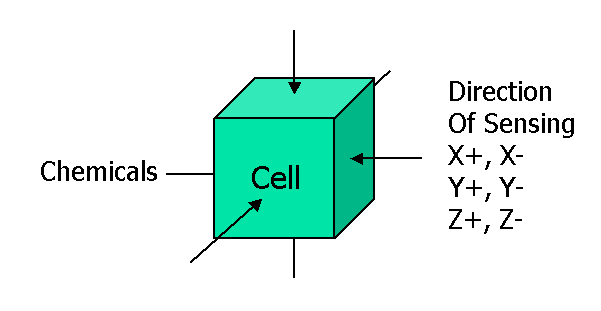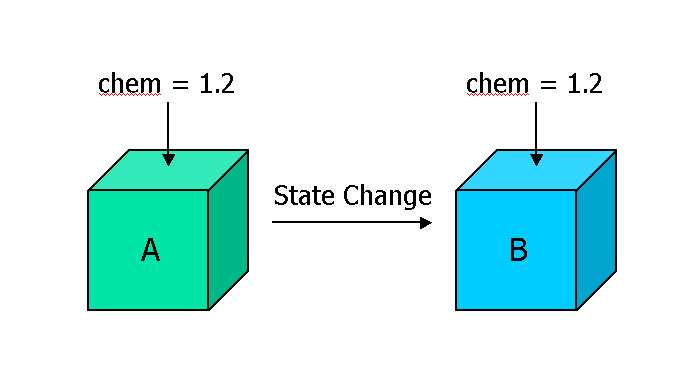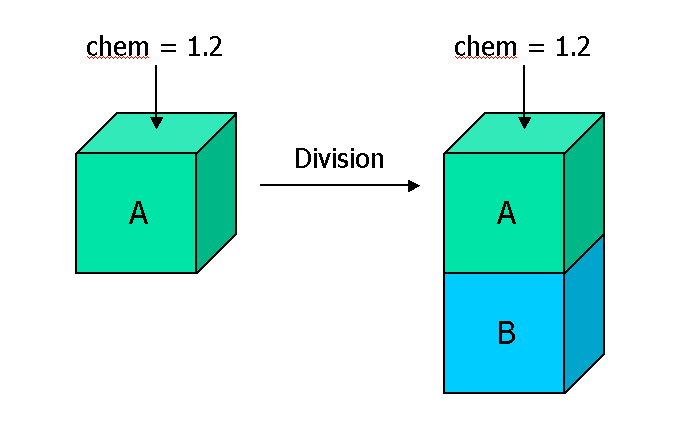
Department of Computer Science
Programming the Swarm

|
Sponsored by the National Science Foundation |
evans@cs.virginia.edu
Selvin George
selvin@cs.virginia.edu
Cells respond to changes in the environment. Changes in the environment are modelled as the presence or absence of chemicals. Cells can detect the direction from which the sensed chemicals came from and act accordingly.

Cells can change state when a particular set of chemical conditions is met.
If the cell in state A follows the condition given as:
(chem > 0) from Y+ -> (B)
then cell in state A undergoes a state change when chemical chem is received from Y+ direction and the concentration is higher than 0

Cells can undergo division when a particular set of chemical conditions is met.
If the cell in state A follows the condition given as:
(chem > 0) from Y+ -> (A, B) in Y-
then cell in state A divides when chemical chem is received from Y+ direction and the concentration is higher than 0. The new daughter cell is placed in the Y- direction as specified in the condition. In this example, the cell with state A will keep producing daughter cells in state B as long as the chemical condition is true


|
University of Virginia Department of Computer Science Programming the Swarm |
|
David Evans evans@cs.virginia.edu Selvin George selvin@cs.virginia.edu |